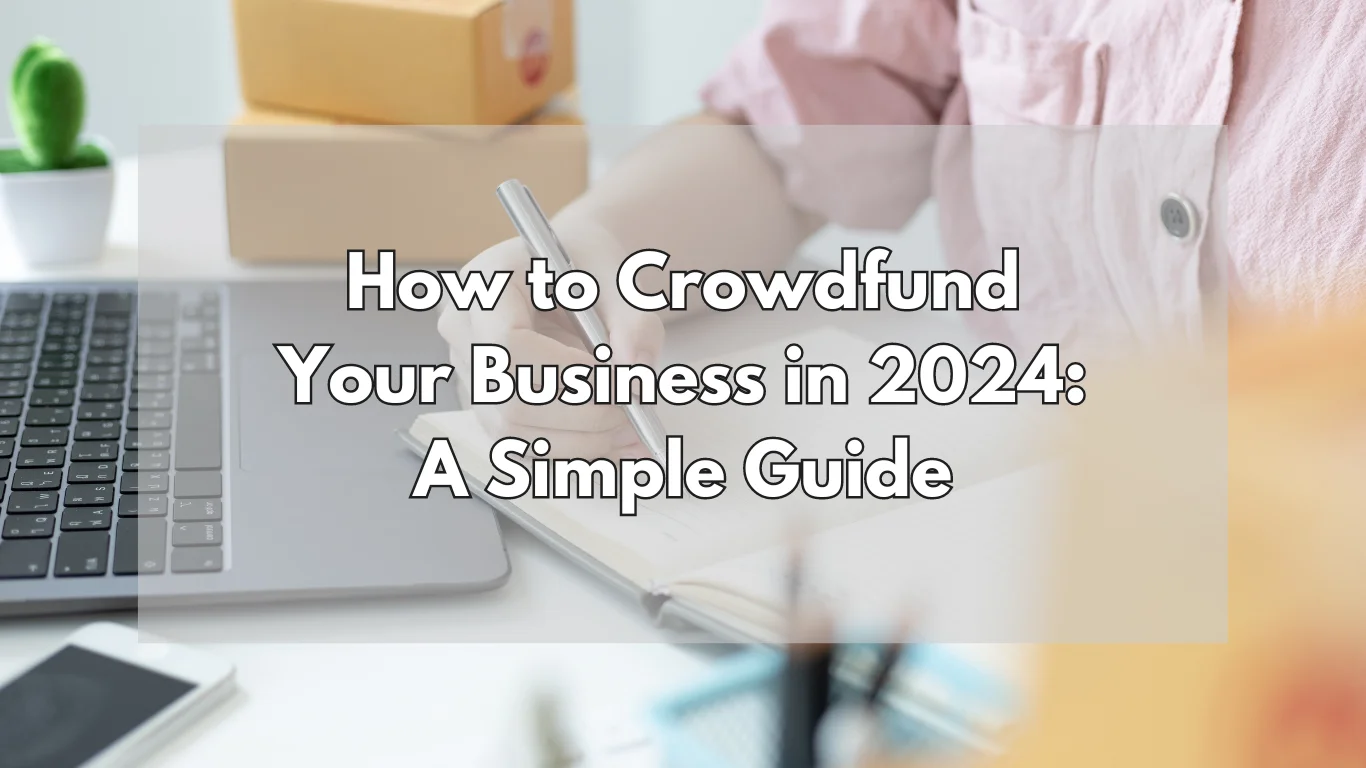Are you an aspiring entrepreneur in search of innovative ways to fund your business idea? Look no further than crowdfunding. This complete guide will walk you through the process of crowdfunding your business, from understanding the various types of crowdfunding to selecting the right platform and creating a compelling campaign. Let’s dive in and explore how to crowdfund your business.
What is Crowdfunding?
Crowdfunding has changed the way entrepreneurs can raise capital for their business ventures. Instead of relying on traditional loans or investments from a handful of individuals, crowdfunding allows you to reach a larger pool of potential backers. It involves raising money from a large number of individuals, usually through online platforms, who believe in your idea and are willing to contribute financially to bring it to life.
Is Your Idea Suitable for Crowdfunding?
Before diving into the world of crowdfunding, it’s essential to assess whether your business idea is suitable for this funding method. Consider the following factors:
Business Plan and Product Prototype
To attract potential investors, having a well-developed business plan and a functional product prototype is crucial. Your campaign page should clearly communicate the details of your project, demonstrating why it is unique and why people should invest in it.
Unique Selling Proposition (USP)
Identifying your unique selling proposition is critical to creating a standout crowdfunding campaign that distinguishes you from competitors.
Market Demand
Understanding the demand for your offering and knowing your potential customer base is essential for a successful crowdfunding campaign. Crowdfunding campaigns often attract individuals who are genuinely interested in purchasing your product or service.
Funding Goals
While crowdfunding has the potential to raise significant amounts of money, it’s essential to set realistic funding goals. Consider whether crowdfunding can cover your funding needs or if it should be part of a broader fundraising strategy.
Investor Incentives
Unless you are running a donation-based campaign, you need to offer enticing incentives to investors. Think about what rewards you can provide to backers that align with your business and make them feel valued.
Choosing the Right Type of Crowdfunding
Not all crowdfunding campaigns are the same. Understanding the different types of crowdfunding will help you pick the best option for your business. Here are the main types:
Donation Crowdfunding
Donation crowdfunding involves individuals contributing money to support your venture without expecting anything in return. This type of crowdfunding is often used for charitable causes or community projects.
Rewards Crowdfunding
Rewards crowdfunding offers backers rewards in exchange for their investment. These rewards can range from merchandise, exclusive content, discounts, or early access to the product or service being offered.
Equity Crowdfunding
Equity crowdfunding allows investors to become shareholders in your company by contributing funds. In return, they receive shares or ownership stakes in your business. It’s important to note that not all crowdfunding platforms support equity crowdfunding.
Debt Crowdfunding
When it comes to debt crowdfunding, which is also known as peer-to-peer lending, individuals or groups of investors can lend money to your business to help you meet your financial needs. You are then responsible for repaying the borrowed funds, usually with interest, within a specified timeframe.
Selecting the Best Crowdfunding Platform
Choosing the right crowdfunding platform is key to the success of your campaign. Each platform has its own set of features, target audience, and fee structure. Here are some popular crowdfunding platforms to consider:
Kickstarter

Kickstarter is a popular crowdfunding platform that primarily targets creative projects across categories like design, technology, and the arts. It follows an “all-or-nothing” approach, which implies that if your project fails to meet its funding goal, you won’t receive any funds.
Indiegogo

Indiegogo provides two funding options: fixed and flexible. The fixed option guarantees that you will receive funds only if you reach your goal. In contrast, the flexible option allows you to keep whatever amount you raise. The platform supports a range of projects in various categories, such as education, health, film, and more.
EquityNet

EquityNet is a business-oriented crowdfunding platform that connects entrepreneurs with accredited investors. It provides tools to improve business plans, matches investors, and offers an extensive resource library to navigate the crowdfunding process.
Patreon

Patreon is ideal for creators, such as musicians, podcasters, and artists, who seek ongoing support from their fans and subscribers. Backers can make monthly contributions in exchange for exclusive content or other rewards.
CircleUp

CircleUp focuses on equity crowdfunding for businesses looking to scale. It connects entrepreneurs with accredited investors interested in investing in promising startups. CircleUp also offers additional resources like credit financing and consumer marketing insights.
LendingClub

LendingClub specializes in debt crowdfunding, providing crowdfunded loans to small businesses. It matches entrepreneurs with lenders interested in startup funding, offering loan amounts of up to $500,000.
Crafting an Effective Crowdfunding Campaign Page
Creating a compelling campaign page is crucial to attract and engage potential investors. Here are some tips to craft an effective crowdfunding campaign page:
Tell Your Story
Introduce yourself and your business idea compellingly. Explain why your idea matters and how it will solve a problem or fulfil a need in the market. Use engaging visuals and videos to bring your story to life.
Set Clear Funding Goals
Clearly explain how much money you need and how you will use the funds. Break down the costs and demonstrate transparency to build trust with potential backers.
Offer Attractive Rewards
Develop a range of rewards that appeal to different levels of investment. Make sure the rewards are enticing and demonstrate the value that backers will receive in return.
Use High-Quality Visuals
Invest in professional photographs, videos, and graphics. Visuals can notably impact the success of your campaign by capturing the attention of potential backers and conveying your message effectively.
Provide Regular Updates
Keep your backers engaged by providing regular updates on the progress of your campaign. Share milestones, achievements, and any challenges you may be facing. Transparency and communication are crucial to building trust.
Developing a Promotion Strategy

Creating a compelling campaign page is just the beginning. To attract potential backers, you need to develop a robust promotion strategy. Here are some effective strategies to consider:
Leverage Your Network
Start raising capital from your friends, family, and personal network. They can become your initial backers and help spread the word about your campaign. Motivate them to share your campaign on social media and with their networks.
Utilize Social Media
Social media platforms can significantly boost crowdfunding campaigns through engaging posts, relevant hashtags, and regular updates that can increase reach and attract potential donors.
Engage with Influencers
Identify the influencers or individuals with a significant following in your industry or niche. Collaborate with them to promote your campaign and reach their followers. This approach can significantly increase the visibility and credibility of your campaign, as consumers nowadays tend to prefer more personalized marketing techniques.
PR and Media Outreach
Generate buzz and increase exposure for your campaign by reaching out to relevant media outlets, blogs, and publications covering topics related to your business. Offer them exclusive content or interviews.
Email Marketing
Build an email list of potential backers and supporters who have expressed interest in your business or industry. Send regular updates, exclusive content, and reminders about your campaign to keep them engaged.
Staying Engaged During the Campaign
Once your campaign is live, it’s crucial to stay engaged and maintain momentum. Here are some tips to keep your campaign active:
Regularly Interact with Backers
Respond to comments, messages, and inquiries from backers in a timely manner. Show gratitude for their support and keep them updated on the progress of your campaign.
Offer Limited-Time Incentives
Create urgency by offering limited-time incentives or discounts to encourage potential backers to take action. This can help drive more pledges and increase the overall success of your campaign.
Collaborate with Backers
Involve your backers in the campaign by seeking their input or ideas. This can create a sense of community and ownership, making them more likely to share your campaign with their networks.
Share Behind-the-Scenes Content
Offer exclusive behind-the-scenes content or sneak peeks to backers. This builds a stronger connection between your campaign and your supporters, making them feel like they are part of something special.
Fulfilling Your Promises
Once your campaign has ended, it’s time to fulfil the promises you made to your backers. Here are some critical steps to take:
Communicate Shipping and Delivery Timelines
Provide clear timelines for when backers can expect to receive their rewards. Be transparent about any potential delays or challenges that may arise, and keep backers informed throughout the process.
Deliver Rewards as Promised
Ensure that you deliver the rewards to your backers as promised. Don’t forget to take extra care in packaging and shipping to provide a positive experience for your supporters.
Express Gratitude
Thank your backers for their support and acknowledge their contributions. Show your appreciation through personalized messages, thank-you notes, or even small gifts as a token of gratitude.
Case Studies: Successful Crowdfunding Campaigns
To inspire your crowdfunding journey, let’s take a look at some successful campaigns that have achieved remarkable results:
Pebble Time Smartwatch
Pebble Time, a smartwatch company, launched a crowdfunding campaign on Kickstarter and raised over $20 million in just 32 days. Their campaign offered exclusive early-bird discounts and showcased the unique features of their smartwatch.
Exploding Kittens
Elan Lee and Matthew Inman’s card game, Exploding Kittens, raised over $8 million on Kickstarter thanks to their use of humour, engaging visuals, and a solid social media presence.

Oculus Rift
Oculus Rift, a virtual reality headset, began as a crowdfunding campaign on Kickstarter, raising over $2.4 million. The campaign attracted attention with its innovative technology and the promise of immersive experiences.
Wrapping Up
In conclusion, crowdfunding can be a potent tool for entrepreneurs to raise initial resources for their business ventures. By understanding the different types of crowdfunding, selecting the right platform, crafting an effective campaign page, and implementing a solid promotion strategy, you can increase your chances of success. When crowdfunding, it’s important to keep your supporters in the loop and follow through on your promises. This helps build a loyal community and turn your business idea into a reality. To achieve this, plan carefully and execute wisely. Keep your language simple and direct, and use short sentences to convey only necessary information.





Thank you for your sharing. I am worried that I lack creative ideas. It is your article that makes me full of hope. Thank you. But, I have a question, can you help me?